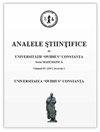Analysis of Control Interventions against Malaria in communities with Limited Resources
IF 0.8
4区 数学
Q2 MATHEMATICS
Analele Stiintifice Ale Universitatii Ovidius Constanta-Seria Matematica
Pub Date : 2021-06-01
DOI:10.2478/auom-2021-0019
引用次数: 2
Abstract
Abstract The aim of this paper is to analyse the potential impact of multiple current interventions in communities with limited resources in order to obtain optimal control strategies and provide a basis for future predictions of the most effective control measures against the spread of malaria. We developed a population-based model of malaria transmission dynamics to investigate the effectiveness of five different interventions. The model captured both the human and the mosquito compartments. The control interventions considered were: educational campaigns to mobilise people for diagnostic test and treatment and to sleep under bed nets; treatment through mass drug administration; indoor residual spraying(IRS) with insecticide to reduce malaria transmission; insecticide treated net (ITN) to reduce morbidity; and regular destruction of mosquito breeding sites to reduce the number of new mosquito and bites/contact at dusks and dawn. Analysis of the potential impact of the multiple control interventions were carried out and the optimal control strategies that minimized the number of infected human and mosquito and the cost of applying the various control interventions were determined.资源有限社区疟疾控制干预措施分析
本文旨在分析当前多种干预措施对资源有限的社区的潜在影响,以获得最优控制策略,并为未来预测最有效的疟疾传播控制措施提供依据。我们开发了一个基于人群的疟疾传播动态模型,以调查五种不同干预措施的有效性。该模型同时捕获了人类和蚊子的隔间。考虑的控制干预措施包括:开展教育运动,动员人们进行诊断测试和治疗,并让人们睡在蚊帐里;通过大量给药进行治疗;室内残留喷洒杀虫剂,减少疟疾传播;杀虫剂处理过的蚊帐(ITN),以减少发病率;定期摧毁蚊子滋生地,以减少黄昏和黎明时新蚊子的数量和叮咬/接触。分析了多种控制干预措施的潜在影响,确定了最优控制策略,使感染人数和蚊子数量最小化,并确定了各种控制干预措施的应用成本。
本文章由计算机程序翻译,如有差异,请以英文原文为准。
求助全文
约1分钟内获得全文
求助全文
来源期刊

Analele Stiintifice Ale Universitatii Ovidius Constanta-Seria Matematica
MATHEMATICS, APPLIED-MATHEMATICS
CiteScore
1.30
自引率
0.00%
发文量
15
审稿时长
6-12 weeks
期刊介绍:
This journal is founded by Mirela Stefanescu and Silviu Sburlan in 1993 and is devoted to pure and applied mathematics. Published by Faculty of Mathematics and Computer Science, Ovidius University, Constanta, Romania.
 求助内容:
求助内容: 应助结果提醒方式:
应助结果提醒方式:


